Primate Forest

Primate Forest
About this Exhibit
Primate Forest houses several species of primates from both the Old World monkeys that can be found in the Middle East, Africa, and parts of Asia, and New World monkeys that are found in South and Central America.
Primates are mammals that have a highly developed brain, eyes that face forward, a shortened nose or muzzle, and (usually) opposable thumbs. Primates generally live in groups with complex social systems and their high intelligence allows them to adapt to different environments.
At a Glance:
- Built in 1997
- Dedicated to LaMar Farnsworth, a former zoo director
- The middle outdoor primate exhibit is 18 feet high
- Guests can watch the amazing primates while eating in the Beastro
Primate Forest resident animals:
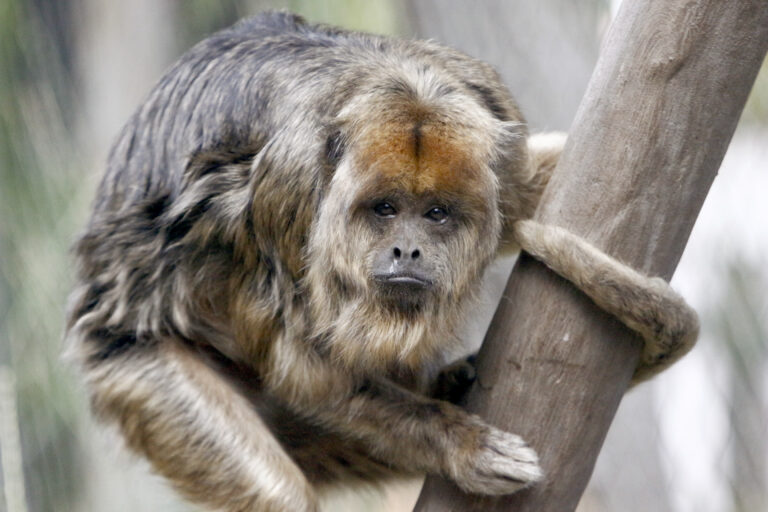
Black Howler Monkey
Range:
Brazil, Paraguay, and Argentina
Habitat:
Primary dry deciduous, and broadleaf forests
Characteristics:
Adult males are all black while adult females are golden light to dark yellow. These primates are the biggest of all the New World monkeys. Unlike Old World monkeys, howlers and other New World species have wide, side-opening nostrils and no pads on their rumps. Howlers also boast a prehensile tail. They can use this tail as an extra arm to grip or even hang from branches—no Old World monkeys have such a tail. A gripping tail is particularly helpful to howler monkeys because they rarely descend to the ground. They prefer to stay aloft, munching on the leaves that make up most of their diet.
Behavior:
Black-and-gold howlers may come to the ground to drink from ponds. They also drink water from arboreal sources by wetting and then licking their hands. They drink more water when there is a lack of young leaves.
Reproduction:
Tongue flicking is a ritualized display of sexual solicitation. It is especially distinctive in this species because the tongues are pink, bordered with black. Usually only one offspring is born. Both genders are the same color until the male turns black at about 2 1/2 years old.
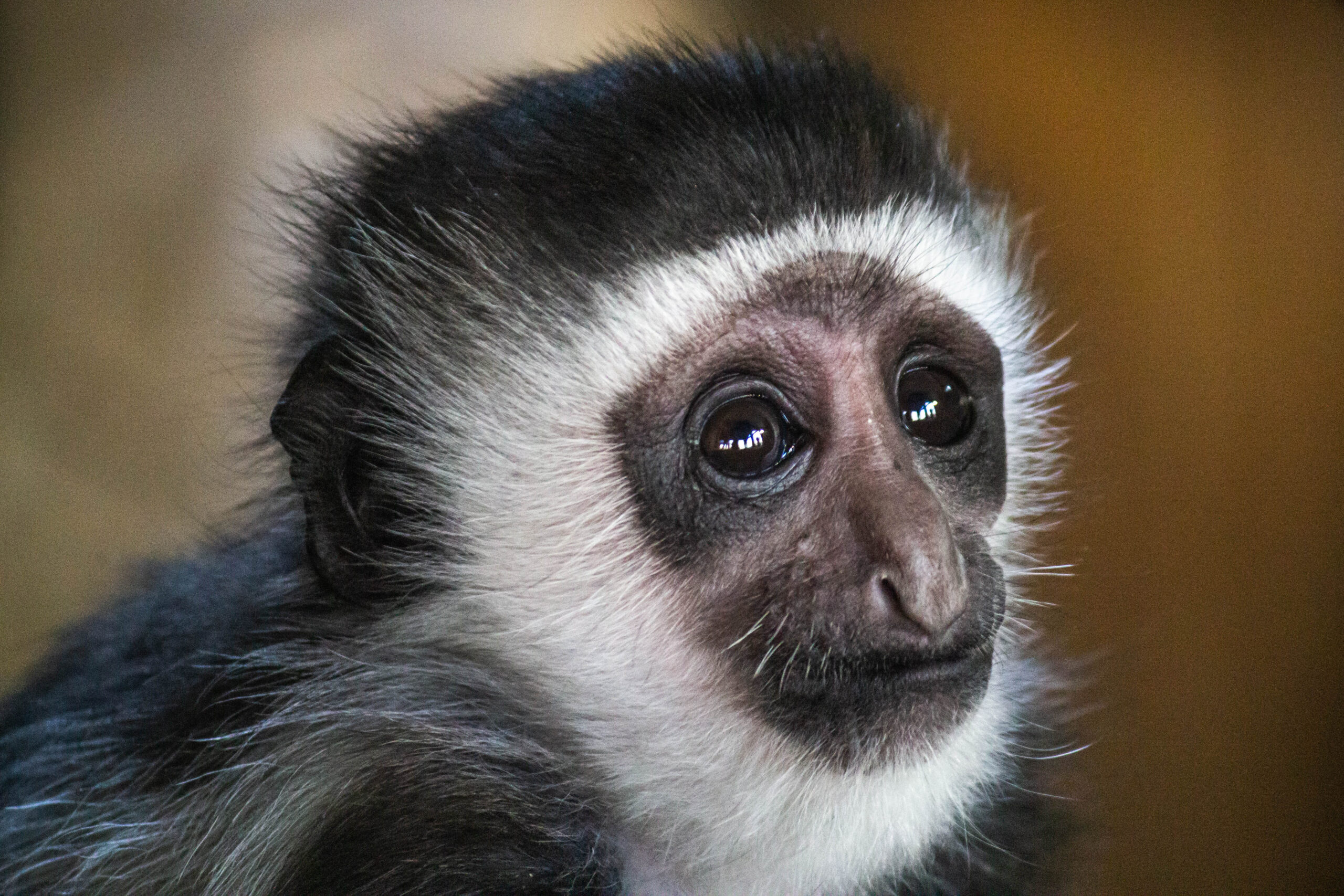
Eastern Black & White Colobus Monkey
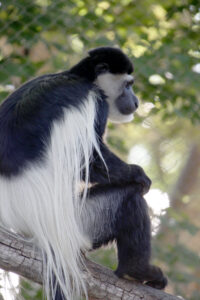
Range:
Nigeria to Ethiopia, Kenya, Uganda, Tanzania
Habitat:
Primary and secondary forests, along river ways and wooded grasslands
Characteristics:
Colobus monkeys are the only Old World monkey to have a reduced thumb. The name, Colobus, actually means “mutilated one” referring to their lack of thumbs. Colobus are great leapers often taking dives of 20-30 feet through the canopy and the lack of thumbs gives their hands a “hook-like” shape which enables them to move gracefully through the trees. They can run up to 30 miles an hour and use their powerful legs to kick or bounce off objects and opponents. They have a specialized gut that allows them to breakdown cellulose from leaves, and often have smelly flatulence as a result.
Behavior:
Colobus are mostly arboreal, spending their mornings sunbathing and will descend down to the lower levels to forage for aquatic plants. They produce a low-pitched roaring chorus for displaying and alarm-calling. They use subtle body language to show aggression including tongue-clicking and leg dropping. They will aggressively chase others from their territory.
Reproduction:
Gestation length is generally unknown but estimated at about 6 1/2 months long. Infants are born with all white, curly fur and pink faces. By 6 months old they will have achieved full adult coloration. After birth, infants immediately cling to their mother’s stomach where they will be carried until they are weaned.
Interesting Facts:
Colobus monkeys are sometimes referred to by the locals as “messengers of God” because of the time they spend traveling back and forth between the tree tops and the ground.
Conservation:
Colobus are hunted for their pelts and sold to tourists but the biggest threat to the survival of African wildlife, like colobus, is no longer habitat loss, it’s bushmeat. Bushmeat is the illegal, commercial and unsustainable trade in wildlife meat.
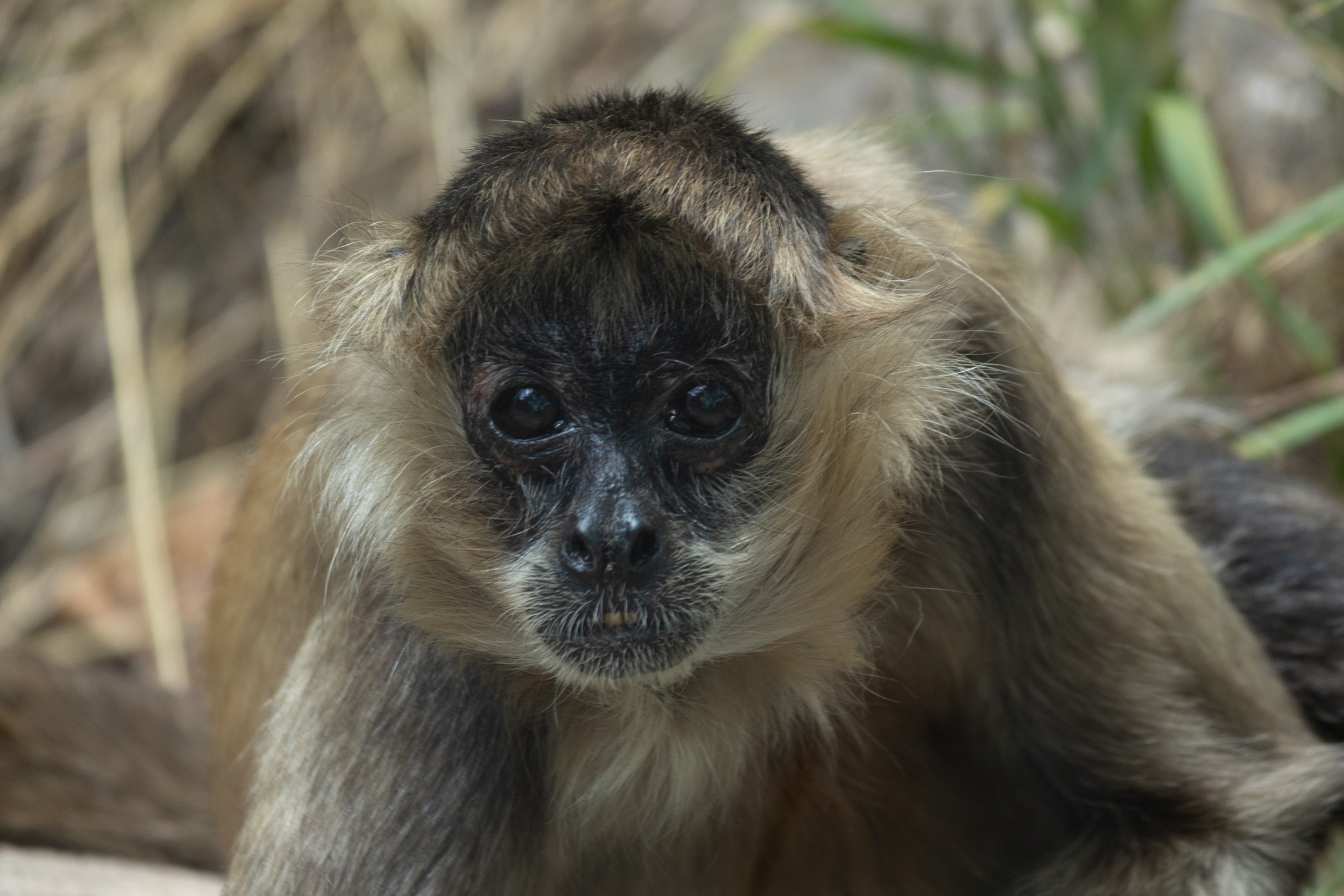
Spider Monkey
Range:
Mexico, Panama, and Ecuador
Habitat:
Lowland to lower montane rain forest, and evergreen and semi-deciduous forest
Characteristics:
Spider monkeys are ideally suited for a life in the canopies of the forest. They have long limbs and flexible shoulder joints that enable them to move easily from branch to branch. They have a prehensile tail, meaning “able to grasp,” and their tail can be used like a fifth limb. The underside of the tail has a friction pad which allows for maximum dexterity and provides unique prints like human fingerprints. Colorations are variable among species but all infants are born with a pink face and ears.
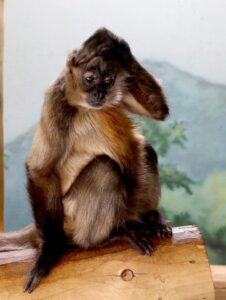
Behavior:
Spider monkeys are referred to as the most accomplished acrobats of the forest. They are primarily arboreal and even sleep in the tree tops. Living loosely organized in groups of 4 to 25 individuals, they are usually led by the alpha female. They have several vocalizations including barks, whinnies, screams, trills and sobs. Either in greeting or reconciliation, Spider monkeys are known to hug each other and even wrap their tails around one another.
Reproduction:
Gestation cycle of 226-232 days with usually only a single baby being born. The infant is totally dependent on its mothers for about 10 weeks after which it begins to leave its mother to play and investigate its nearby surroundings, often playing with other infants. Infants are carried on their mother’s stomachs until 16 weeks old and then are able to be carried on her back.
Interesting Facts:
Their genus name, Ateles, means “imperfect”, which refers to their lack of thumbs. When first discovered, Spider monkeys were observed hanging suspended from their tail with their arms and legs dangling down. This gave them a “spider-like” appearance and hence earned them their name. They are very intelligent and have an impressive memory.
Conservation:
The brown-headed Spider monkey is considered endangered and the black-handed Spider monkey is considered vulnerable. Both are at risk primarily due to habitat loss and the bushmeat trade. They are also victims of the pet trade.